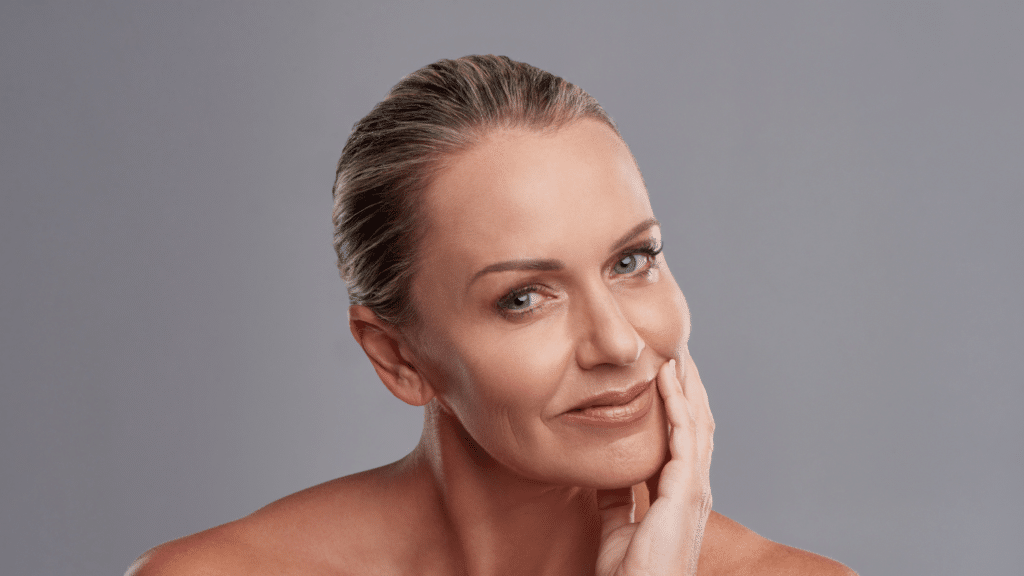The world of skin care loves a new miracle molecule and the nad (dinucleotide nicotinamide) is the last to get VIP treatment. The benefits of the NAD skin are splashing in serum serums and infusions, with promises of younger, stronger and shiny skin. But are these allegations all the advertising campaign, or do they really support them? Let’s break the real story and move on to some persistent myths about NAD in your skin care routine.
Myth #1: “Nad Serums makes you look younger”
Reality:
Nad⁺ is really vital to youthful skin, playing a central role in cell energy, DNA repair and enzymatic activity against aging. However, local Nad⁺ products are only as good as their formulation. Most nad⁺ molecules are too large and polar to effectively penetrate the skin barrier. Size and charge are the two largest reasons why active skin care can not penetrate the skin barrier. Without advanced delivery technology, such as an enclosure or operation, they cannot penetrate. In fact, a study found that the nad⁺ ointment required cooling to remain firm and its benefits (such as reducing inflammation in psoriasis) were not dramatically “anti-aging makeovers” but rather improved skin barrier and tolerance.
Takeaaway:
While nad⁺ is vital to the body for healthy skin, do not expect a one -night transformation of basic nad⁺ serums. The wording and stability are decisive and the benefits will be subtle and gradual, not immediate. In addition, you need to look for the serum -supporting items to ensure that there are significant benefits. If you decide to buy a NAD serum to take advantage of the benefits of the NADS skin, make sure you keep it refrigerator.
Myth #2: “Every NAD product will boost your skin’s nad⁺ levels”
Reality:
The nad⁺ itself is a large molecule and is poorly absorbed through the skin, unless it is encapsulated or chemically modified. In contrast, niassinamide (nicotinamide), a form of vitamin B and a precursor nad⁺, is small, easily penetrates the skin. Some data show that it reliably increases nad⁺ in cells. That is why niassinamide has clear effects on aging in multiple clinical trials, such as improved wrinkles, elasticity and barrier force. The newer amplifiers such as NMN and NR theoretically penetrate better, but their effectiveness is limited without special delivery systems. In addition, there are no strong clinical data to support their benefits to local skin care.

Takeaaway:
If you want the benefits of NAD skin backed by science, search for niainamide over nad⁺ in the list of ingredients. Niasinamide is the proven way to increase nad⁺ on your skin.
Myth #3: “NAD products go beyond collagen and other active”
Reality:
Collagen creams are often sold in parallel with the nad⁺ serums, but here is the deal: local collagen acts mainly as a moisturizing cream. It moisturizes and eliminates, but it cannot cause a new collagen formation because the molecule is too large to penetrate the skin. To combat this issue, scientists and cosmetic chemists have developed smaller shapes and collagen fragments that have a similar functionality to the full -size molecule.
Active Nad⁺ reinforcement, especially niassinamide, can penetrate the skin barrier. Allowing them to work at the cellular level, supplying DNA repair and supporting the health of the barrier. However, large-scale anti-bristles are more reliable for niainamide, not for local nad⁺ or collagen. Resveratrol, another modern ingredient, can activate nad⁺ sirtuins and is a proven antioxidant, but it is not a replacement of Nad⁺ itself.

Takeaaway:
To support barrier and anti -aging, niassinamide, a proven nad⁺ booster, hits local collagen. While resveratrol offers additional antioxidant benefits, but requires nad⁺ for its effects.
Myth #4: “Nad⁺ or IVs injections prove to be rejuvenated the skin”
Reality:
Injections iv nad⁺ have become popular with wellness clinics, promises to “recharge” the skin and body. While these injections increase NAD⁺ levels systematically, there are no published clinical trials specifically that show skin rejuvenation after nad⁺ infusions. The referenced benefits for the skin are anecdotes and any improvements are probably secondary to the effects of the whole body. High doses can cause temporary rinsing, nausea or farce. Negative effects are usually resolved when the infusion slows down or stops. No serious long -term side effects have been reported, but there is no FDA approval for any dermatological use.

Takeaaway:
Nad⁺ IVS is not shortcut on the best skin and their reputation “anti-aging” is in front of the clinical elements.
Myth #5: “The benefits of the skin nad⁺ are equal to all products”
Reality:
Not all Nad⁺ products are created equal. For Nad⁺ or its precursors (NMN, NR) for work, they must really penetrate the skin barrier and remain firm in the product. The most reliable skin improvements (such as wrinkle reduction, tuna and enhanced hydration) come from well -landscaped niasinamide products. Specifically, because niassinamide has a powerful clinical file.

Nad⁺ serums and creams can help, but only if they use advanced stabilization and delivery systems. However, the best clinical elements so far are for obstacles and anti -inflammatory benefits, not dramatic rejuvenation.
Takeaaway:
For proven results, search for products based on niasinamide and check the claims on “cellular repair” from simple Nad⁺ serums.
Myth #6: “Nad⁺ in skin care is not safe or causes great side effects”
Reality:
Nad⁺, Niacinamide, NMN and NR have a powerful safety record on local produce. Clinical studies report minimal irritation for ointments and niainamide, even in sensitive skin types or conditions such as rosacea. Rarely, iv nad⁺ can cause transient side effects (flushing, nausea), but they are resolved quickly. No toxic accumulation or serious side effects are known for topical use.

Takeaaway:
Nad⁺ amplifiers are one of the safest active in modern skin care. Irritation is rare and usually mild.
Myth #7: “The more nad⁺, the better”
Reality:
The skin can only use so much nad⁺ at a time. And most importantly, such as most skin care ingredients, effective delivery is more important than pure dose. The highest concentrations of Nad⁺ will not help if the molecule cannot reach live skin cells due to poor formulation or instability. The benefits of niassinamide are observed in just 2-5% concentrations in clinical trials, proving that the tradition and selection of ingredients are more important.

Takeaaway:
Focus on well-designed types-especially with niainamide-and not from the highest NAD⁺ number on the label.
The real benefits of the skin nad – what do you Box Expect
When you cut the advertising campaign here is what is supported by science for the benefits of the NAD skin:
- Reinforced skin barrier (less water loss; more durability)
- Improved hydration and texture
- Reduce fine lines, wrinkles, coloring and redness (proven for niasinamide)
- Support for DNA repair and cell energy
- Excellent safety profile, even for sensitive skin
Local nad⁺ and new nad⁺-boosters are very promising, but the most reliable, powerful effects against aging are still observed with niainamide. NMN and NR can offer benefits in the future as delivery systems are moving.
References
The role of NAD+ in regenerative medicine. (2022). Borders in cellular and developmental biology, 10Article 9512238.
In search of new opposition agents: NAD local composition. (2006). Acta Poloniae Pharmaceutica, 63(5), 405-409.
Tanno, O., OTA, Y, Kitamura, N., Katsube, T., & Inoue, S. (2007). A local derivative of lipophilic niacin increases NAD, epidermal differentiation and barrier function on photodynamic skin. Experimental Dermatology, 16(8), 629-635.
Green, Ba, Yu, RJ, & Van Scott, EJ (2014). Evaluation of the effectiveness and tolerance of a nightly local antioxidant containing resveratrol, Baicalin and vitamin E for the treatment of mild to moderate photographed skin. Journal of Drugs in Dermatology, 13(12), 1467-1472.
Myllyharju, J. (2022). Collagen supplements for aging and wrinkles: a displacement of example in the fields of dermatology and cosmetics. Borders in aging, 3Article 8824545.
Gomes, AP, & Sinclair, Da (2020). NAD+ decrease in age. Cell metabolism, 31(3), 382-395.
Yaku, K., Okabe, K., & Nakagawa, T. (2020). Clinical data on targeting therapeutic. Nutrients, 12(11), 3091.
Recent research on monopucleotide nicotinamide and aging. (2022). The perspective of nature: aging research.
Eden. (2023). Local Nad+: What the research says.
Bissett, DL, elongated, Je, & Berge, Ca (2005). Niacinamide: AB vitamin that improves aging facial skin appearance. Dermatological Surgery, 31(7), 860-865.
Zhang, R., MA, L., Li, G., et al. (2022). Nicotinamide monopucleotide reduces melanin production on elderly skin. Life Sciences, 303Article 120683.
Cosmetics design. (2023, March 13). NAD+: The bioactive struggle of skin aging at the cellular level.
Jhun, HJ, Lee, Sj, Ko, J., Kim, J., & Park, Sh (2024). Randomized, placebo -controlled, pilot clinical study that evaluates… medrxiv.
Wang, Y, Li, X, Wang, Q., et al. (2024). The effects of safety and against the dissolution of nicotinamide monopucleotide on humans: a randomized, double-blind, placebo-controlled, clinical trial of clinical dose. Borders in the aging of neuroscience, 16Article 10721522.
